Solving linear equations -> parentheses
Parentheses in Math
In mathematics, parentheses are used to indicate the order of operations and to group parts of an expression. Understanding how to use parentheses correctly is important in solving mathematical problems.
Order of Operations
When working with mathematical expressions, it's crucial to follow the correct order of operations, commonly remembered by the acronym PEMDAS:
- Parentheses
- Exponents
- Multiplication and Division (from left to right)
- Addition and Subtraction (from left to right)
Grouping
Parentheses are used to group parts of an expression together, indicating that the operations within the parentheses should be performed first. For example, in the expression 2 * (3 + 4), the addition inside the parentheses must be done before multiplying by 2. Without the parentheses, the expression would be interpreted as 2 * 3 + 4, which gives a different result.
Examples
Let's look at a few examples to illustrate the use of parentheses:
- Simplify the expression: 5 * (2 + 3)
- Simplify the expression: (8 - 3) * 22
Using the order of operations, we first perform the addition inside the parentheses to get 5 * 5 = 25.
In this case, we start by evaluating the expression within the parentheses, giving us 5 * 4 = 20.
Study Guide
To master the use of parentheses in math, it's important to:
- Understand the order of operations and the role of parentheses within it.
- Practice simplifying expressions using parentheses to ensure clarity in understanding.
- Be mindful of using parentheses to group parts of an expression, especially when dealing with multiple operations.
By becoming proficient in the use of parentheses, you'll be better equipped to solve mathematical problems accurately and effectively.
.◂Math Worksheets and Study Guides Eighth Grade. Solving linear equations
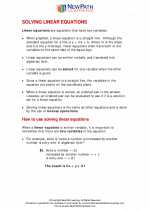
 Worksheet/Answer key
Worksheet/Answer key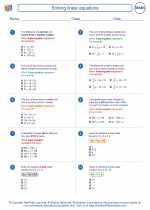
 Worksheet/Answer key
Worksheet/Answer key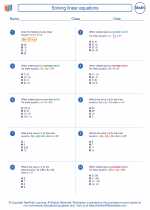
 Worksheet/Answer key
Worksheet/Answer key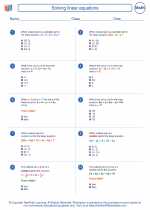
 Worksheet/Answer key
Worksheet/Answer key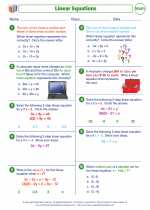
 Worksheet/Answer key
Worksheet/Answer key
